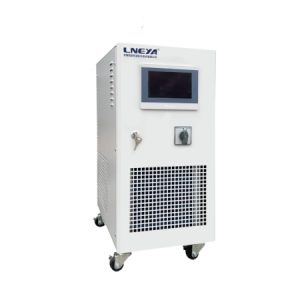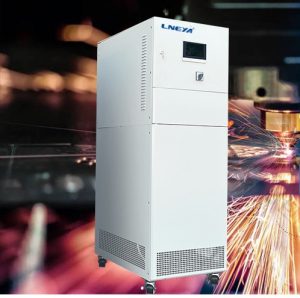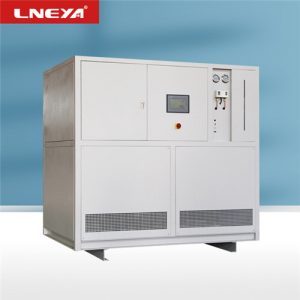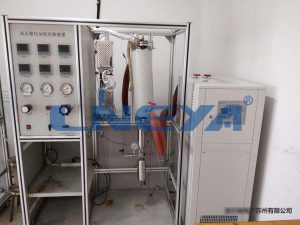Scanning Electron Microscope Cooling Water Circulation System
Scanning Electron Microscope (SEM) is a high-resolution microscope widely used in materials science, biology, nanotechnology and other fields. SEM generates a certain amount of heat during operation. In order to ensure the stable operation and image quality of the microscope, an efficient cooling water circulation system is required to control the temperature inside the SEM.
The following are the key components and working principles of the cooling water circulation system of the scanning electron microscope: Key components:
- Circulation pump: responsible for promoting the circulation of cooling water in the system to ensure that the cooling water can flow evenly through various cooling points inside the SEM.
- Cooling water tank: stores cooling water, usually contains filters and chemical additives to maintain the purity of cooling water and prevent corrosion.
- Heat exchanger: transfers the heat in the cooling water to the external cooling medium (usually air or water) through the heat exchanger to achieve the purpose of cooling.
- Temperature controller: monitors the temperature of the cooling water and adjusts the temperature of the cooling water through automatic control systems such as PID controllers to ensure that it is stable within the set temperature range.
- Filter: Filter impurities in cooling water to prevent clogging of the cooling system.
- Pipes and valves: Connect various components to ensure that cooling water can circulate smoothly.
Working principle:
- Cooling water circulation: Cooling water flows out of the cooling water tank and enters the cooling channel or cooling plate inside the SEM through the circulation pump to absorb the heat generated inside the SEM.
- Heat exchange: The cooling water that has absorbed heat then flows into the heat exchanger, where the heat is transferred to the external cooling medium through the heat exchanger to achieve cooling of the cooling water.
- Temperature control: The temperature controller continuously monitors the temperature of the cooling water and adjusts the speed of the circulation pump, the flow rate of the cooling water or the working state of the heat exchanger as needed to keep the temperature of the cooling water stable within the set range.
- Circulation reflux: The cooled cooling water returns to the cooling water tank again to prepare for the next cycle.
- Filtration and maintenance: After a period of use, the cooling water needs to be filtered to remove impurities, and the cooling water and chemical additives need to be replaced regularly to keep the system clean and efficient.
Key requirements:
- Temperature control accuracy: It is usually necessary to control the temperature of the cooling water within the range of ±0.5°C to ±1°C to ensure the stability of the temperature inside the SEM.
- Circulation efficiency: Ensure that the cooling water can circulate efficiently to avoid local overheating. • Safety and protection: The system should have safety measures such as over-temperature protection and pressure protection to ensure the safe operation of the equipment.
- Low noise: The circulation pump and heat exchanger should reduce noise as much as possible to avoid interference with the operation of the SEM.
- Maintenance convenience: The design should be easy to maintain and clean to ensure long-term stable operation.
In summary, the cooling water circulation system of the scanning electron microscope ensures the stability of the temperature inside the SEM by accurately controlling the temperature of the cooling water, thereby improving the imaging quality and stability of the microscope.
Recomendações relacionadas
-
What instruments in biopharmaceutical processes require cooling water systems?
846In biopharmaceutical processes, many critical equipment and instruments require cooling water systems to maintain their normal operation and process temperature control. The following are some common types of equipment that require cooling w...
Ver pormenores -
Que ensaios são utilizados pelos refrigeradores de água de arrefecimento para empresas de energia nova?
927No processo de desenvolvimento de produtos, produção e controlo de qualidade, as novas empresas de energia utilizarão refrigeradores de água de refrigeração para realizar uma variedade de testes. Os refrigeradores de água de refrigeração desempenham um papel importante nestes testes para garantir o desempenho...
Ver pormenores -
Refrigeration Unit Water Cooling Chiller
783The chiller water cooling system is an efficient cooling solution that removes heat by circulating cooling water. This system is widely used in industrial, laboratory and commercial environments, especially in applications that require precis...
Ver pormenores -
Cautions for Ultra-low Temperature Freezer
10101. Requirements of equipment environment: To keep the outside of cryogenic refrigerator clean and ventilated, it is necessary to keep the horizontal position of cryogenic refrigerator stable, and to ensure that there are no sundries around.2. Mana...
Ver pormenores -
Uses of Thermal Oil Heating Systems in the Pharmaceutical Industry
799The heating temperature requirements in the pharmaceutical industry are very diverse, as different pharmaceutical processes and product preparation steps have different temperature requirements. The following are some of the heating temper...
Ver pormenores -
Pontos de atenção para a inspeção diária do equipamento de controlo de baixa temperatura a menos 30℃
1072The low temperature control equipment at minus 30 degrees Celsius is a refrigeration unit or also called a refrigeration unit. The difference from the chiller is the temperature range. It is a commonly used low-temperature equipment in the industr...
Ver pormenores -
A necessidade do ciclo de aquecimento e arrefecimento da temperatura no processo de hidrogenação catalítica
1104Nos últimos anos, com o aumento do preço do petróleo, a procura de benzeno obtido a partir do benzeno de coque aumentou, juntamente com a ênfase crescente do país na proteção ambiental, a aplicação generalizada da hidrogenação do benzeno de coque...
Ver pormenores
 LNEYA Refrigeradores industriais Fabricante Fornecedor
LNEYA Refrigeradores industriais Fabricante Fornecedor














